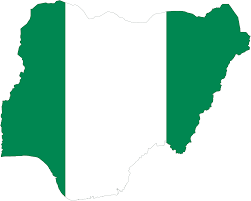
A new report on the fiscal health of the country’s 36 states released by BudgIT, a civic advocacy group, reveals anew how governors failed to harness resources to drive development and reduce poverty. Depressingly, the NGO’s Fiscal Sustainability Index 2018 revealed a continuation of a pattern of high consumption, debts and mismatch between revenue and expenditure by state governments that render public finances messy and deepens poverty and unemployment. Shock therapy is urgently needed to force responsible and realistic fiscal behaviour by state governments.
However, past and current experiences do not encourage optimism: a recession provoked by a sharp drop in oil prices 2014-2018 was only the latest turbulence to hit the economy and public revenue. There have been repeated cycles of bumper revenues from oil receipts and hardship when prices fall since the late 1970s. Yet, beyond rhetoric and empty pledges to diversify revenues sources, neither the federal nor the state governments have moved radically or fast enough to match words with action. If the reality of lean resources culminating in inability to meet the wage bill and recourse to borrowing to fill the gap has not curbed our fiscal waywardness, what will?
The BudgIT report, recounted what is already well-known: most Nigerian states have become fiscal basket cases, unable to fulfil the basic role of driving and sustaining development. Cross River, Osun and Ekiti states led from the rear respectively as least financially sustainable. Like many others, they run a bizarre template of high recurrent spending, high debts and perpetually maintain a mismatch between revenue and expenditure plans.
Accustomed to a quirky form of federalism where they share revenues instead of generating the same and contributing to a central pot, only a few states have developed Internally Generated Revenue platforms that can sustain them without statutory allocations or borrowing. Only Lagos and Rivers earn enough internally to survive without external funding or bailout. Yobe, Bauchi and Kebbi states at N3.5 billion, N4.36 billion and N4.39 billion IGR in 2017 respectively do not even generate enough to maintain their governors.
Star performer – Lagos State, with N333.96 billion IGR in 2017 and 35 per cent of total IGR by all the states, however, also accounted for 18.08 per cent (N813.04 billion) of the N4.49 trillion combined total debt stock of the 36 states. Coupled with high overheads, it dropped from its second place perch in the 2016 index to fourth place, despite its advantage. Though it claimed top place in the ranking, based on its N141 billion recurrent spending in 2017 against total revenue of N209.1 billion, its earnings are mainly from oil and gas.
Our public financial management practices are primitive, characterised by consumption, sharing and white elephants. They needs a shock therapy to shake them out. BudgIT’s observation that the state administrators need “rigour and foresight” to exploit their advantage in agriculture, manufacturing, trade and tourism rings truer every day. Cross River that rolled out an unrealistic budget 2018 of N1.3 trillion without a scintilla of hope of funding it, abandoned a programme to develop its immense potential in tourism or tap its rain forests, with rare flora and fauna, including 16 primate types. Kogi, with communities on the banks of the River Niger and a wide diversity of mineral types, took in only N11.24 billion IGR in 2017.
Until state governments behave like self-sustaining units and primary drivers of the economy, Nigeria will retain the unenviable status of the world’s poverty capital and home to the jobless. Like other federal entities, states must compete for investments and markets. They should no longer look up to the Federal Government to solely create the enabling environment for investments, job creation and export diversification. Bihar, though the 13th largest of India’s 33 states, had the fastest growing economy by Gross Domestic Product 2014-2015, investing in agriculture and services, using its five-year development plan. Maharashtra, the third largest, drives its thriving economy with manufacturing, international trade, mass media and tourism in competition with others.
The Federal Government should help by going beyond its recent decision to demand accountability before releasing more refunds and bailouts to the states that got N1.9 trillion since 2016 from this source. It should no longer guarantee foreign loans to the states unless they are tied to infrastructure projects that can generate their repayments.
In the United States, California, the biggest and richest with GDP of $2.74 trillion, relies on international trade and tourism; Nevada, largely desert and arid, relies on mining, tourism and gambling; while New York is an industrial and financial hub.
Wasting funds to build unviable airports and funding religious activities as many states do will take us nowhere. As another election year beckons, voters should identify and elect candidates who can best mobilise economic forces for the development of the states. The task before governors is to make their states investment-friendly and safe. They should benchmark performance to the number of companies established; jobs created and target 100 per cent literacy and the provision of social services. They need to reform the tax system, reduce the cost of governance by having a lean cabinet, fewer aides and political appointees and slashing the number of ministries and agencies.
Time has run out for rhetoric; unless prudence and sensible policies to diversify revenue, reduce debt and overheads, take root without further delay, the next recession might trigger an unpalatable implosion.
END

Be the first to comment